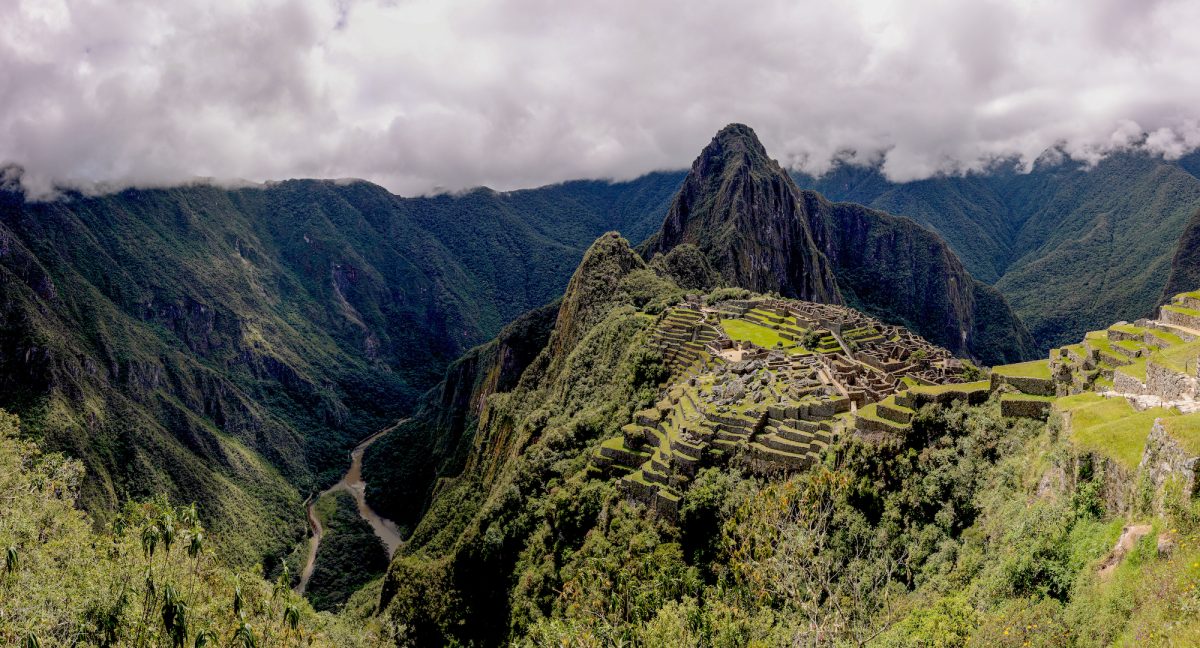
A thousand years before the term “site-specificity” entered the art historical lexicon, the Inca were building expansive settlements that harmoniously melded architecture and the environment. The Peruvian highland people, who established themselves in the Cuzco Valley around 1000 CE, are renowned for their engineering prowess, particularly their ability to shape and fit stones to achieve naturally fortified sites.
The most formidable is doubtlessly Machu Picchu (“Old Peak” in Quechua), a citadel erected on a summit about 9,000 feet above sea level and one of the Seven Wonders of the World. Its panoramic views of the Andes and largely intact stone structures, whose definitive purpose remain a mystery, can now be experienced in virtual reality: Machu Picchu and the Golden Empires of Peru, an exhibition of nearly 200 ancient Peruvian artifacts and immersive VR “expedition,” opens October 16 at the Boca Raton Museum in South Florida.

The drone footage of Machu Picchu for the VR portion of the exhibition was recorded last year, when the COVID-19 pandemic forced the shutdown of the immensely popular tourist destination. Typically overrun with people, the ruins were suddenly completely empty, likely for the first time since their modern unveiling. The Boca Raton Museum’s set-up features individual pods with motion chairs and VR headsets (cleaned between uses, in keeping with COVID safety protocols.)


The vacant panoramas are imposing and sublime, inspiring solemn contemplation. The collection on view, meanwhile, conjures the image of thriving civilizations pulsing with creative energy: elaborate pottery,
ornaments, headdresses, utensils, and more, objects both decorative and functional from Inca and Pre-Inca cultures such as the Nazca, Mochica, Lambayeque, Chimu, and Chavin.“
Machu Picchu, built over 600 years ago by the Incas as a mountain retreat for its rulers, speaks to the power of an empire that once covered a large swath of South America,” museum director Irvin Lippman told Hyperallergic. “In the Andean region, beginning 5,000 years ago, lived one of the most politically and economically complex societies in South America. This exhibition tells their amazing story.”
The Boca Raton Museum is the first stop on a global tour of the show, organized by World Heritage Exhibitions in partnership with the Peruvian Ministry of Culture and the Inkaterra Asociación, with future venues yet to be determined. Its debut in Florida may be especially meaningful to the local Latinx community.
“That it should premier here speaks to the role the Museum plays in our diverse and rapidly growing community in South Florida, where we have the largest population of people of Peruvian heritage in the United States,” Lippman said. (Most Peruvian-Americans in the state, he notes, live in Miami, about an hour’s drive from Boca Raton.)
Machu Picchu and the Golden Empires of Peru runs through March 6, 2022 at the Boca Raton Museum (501 Plaza Real, Boca Raton, FL).
0 Commentaires